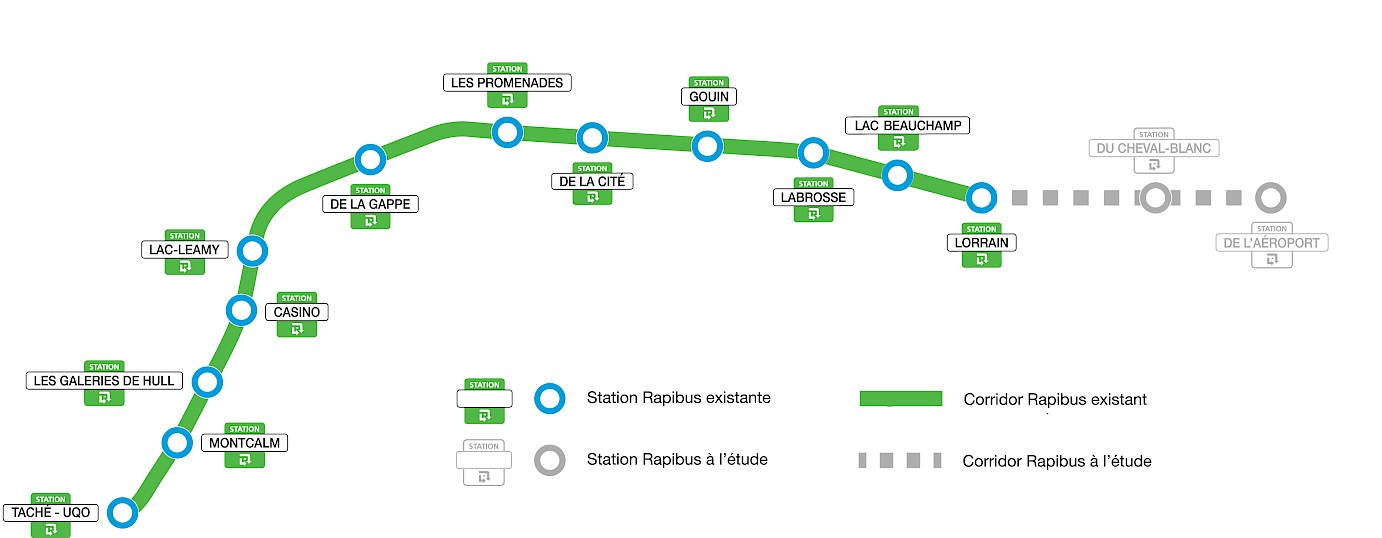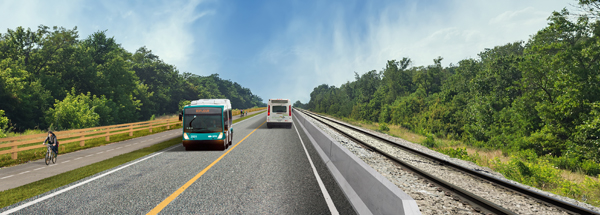Presentation
The Rapibus is the first bus rapid transit (BRT) system to have seen the light of day in Quebec. Since 2013, that corridor, exclusively reserved for buses, has linked the Taché-UQO and Labrosse stations. An opportunity study for the extension to Boulevard de l'Aéroport is underway.

Opportunity study - Rapibus extention to Aeroport boulevard
Carried out in collaboration with CIMA+, the opportunity study that has begun in September will identify and analyze the needs and constraints of this additional section. It will demonstrate its relevance, while taking into account current and future mobility needs.
The study lasts approximately 18 months and includes public consultations at various key moments.
The main stages of the opportunity study:
- Establish the portrait of the territory and the need for the extension;
- Propose 3 route solutions that meet the objectives;
- Analyze and compare the 3 solutions;
- Present the results and recommended solution;
- Refine the recommended solution and table the final report in February 2024.
To carry out this study, we are working in collaboration with:
- The City of Gatineau;
- The Ministère des Transports du Québec;
- The National Capital Commission; and
- The Centre intégré de santé et de services sociaux de l'Outaouais.
Additional section to boulevard Lorrain
The 2.8 km portion along the existing train tracks links the Labrosse and Lorrain stations, stopping at the Lac Beauchamp station.
It includes, among other things:
- a 2.8-kilometre two-lane road reserved for buses;
- a 2.8-kilometre paved multi-purpose bike path;
- a station with all-season bus access to parc du Lac-Beauchamp; and
- two crossings over the multi-purpose path, and one next to the Lac Beauchamp station.


Environmental requirements
From the very start of the project, we were committed to complying with all of the environmental requirements, laws and regulations in effect. As well, we are introducing a series of environmental measures to reduce, as much as possible, the impact of the construction work.
The construction area, including the existing train tracks, will represent approximately 3% of the park’s total surface area.
The partners
We are working in collaboration with:
- Ville de Gatineau,
- Ministère des Transports et de la Mobilité durable du Québec,
- Quebec’s ministère de l'Environnement et de la Lutte contre les changements climatiques,
- Quebec’s ministère des Forêts, de la Faune et des Parcs;
- Fisheries and Oceans Canada.
